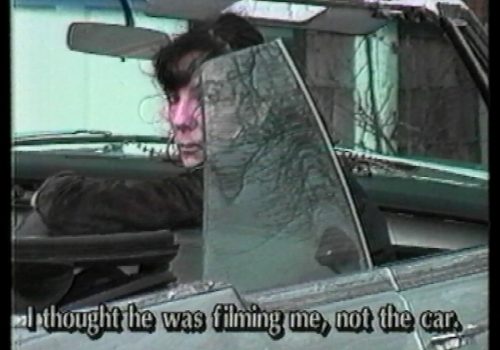The French artist moves in to the Museum of Hunting and Nature in Paris for a temporary exhibition. Fragments of True Stories, reflections on the death of her father, and questions about our relationship to our own animality in an elegant play of images and words.
On one of her visits to the Museum of Hunting and Nature, Sophie Calle fell in love with an emblematic item: an immense stuffed polar bear that dominates the first floor of the building and is a big photo attraction. The artist decided to immortalize this very bear with her camera, and she has now placed the photograph at the entrance to the exhibition. Except that she had draped a white sheet over the animal so that we can only see the massive figure and must guess what it is.
To make the photograph of the bear covered with a white sheet more eloquent, Sophie Calle asked museum staff—custodians and curators—what this scene made them think of. “I see a ghost,” someone said, “but a ghost that isn’t scary.” “Underneath is the head figure of the museum,” said another. “In my country, on the day of their wedding, women wear a white veil that covers them from head to toe. So this makes me think of a bride. Although a bit big…” A bride, a ghost, all the raw material Sophie Calle works on has been assembled here and deployed throughout the museum.
Father
On the ground floor, the first theme the artist explores is the passing of her father. With the assistance of her friend, the artist Serena Carone, Sophie Calle stages this recent death. We can see a portrait of her father, taken shortly before he died, and a moving text in which the artist repeats the last words he uttered in his hospital bed. Across the room, there are photographs of graves taken in the United States. We can see the word “FATHER” engraved on the tombstone. Further on, Serena Carone has created a reclining effigy of the artist. Surrounded by stuffed animals, the sculpture represents Sophie Calle, her hand covering her face; she is wearing a colorful dress with marine-animal motifs and a short black veil over her head as a sign of mourning. The stuffed animals represent the artist’s loved ones who had passed away and to whom—just as she does with each of her friends—she has ascribed an animal that best corresponds to their personality.
The fake wedding
On the first floor of the museum, fragments of the book True Stories punctuate the visit. At each point, an object—for the most part rather small—invites the viewers to read the accompanying text. For instance, the artist has laid out a bra in the drawer of an old cupboard: this is the bra (“soutien-gorge”) she wore as a teenager, even though she had no breasts yet, and which her mother called a “soutien-rien,” “support-nothing.” Further on, we see a high-heel shoe that testifies to how she was assaulted by a stripper when she was working in Pigalle. Further along, Sophie Calle displays a photograph dating to 1992 which shows her standing on the front steps of a town hall. She is wearing a white dress, holding a bouquet, and is surrounded by friends and family. The scene evokes a wedding, but the ceremony is not real. The artist had organized a fake wedding because she wanted to wear, once in her life, a wedding dress, even though she wasn’t going to get married.
The French hunter
Her caustic wit has also taken over the museum’s second floor. There, Sophie Calle explores our relationship to hunting in the sphere of love and sexuality. In the first part, she features an early work that involved following a man in Venice. Like in a crime show, the artist records his comings and goings, and photographs herself in the process of tailing him. This work resonates with those in the following rooms. Sophie Calle dug out classifieds ads from a magazine known for its personal column, Le Chasseur français (“the French hunter”), and underlined the most frequent words, which change with the times. Next to the ads is a series of photographs with captions that evoke the relationship of permanent predation between men and women. Sophie Calle photographed deserted meeting points and added fragments of classified ads from Libération. She thus reveals a whole vocabulary related to hunting. A man is searching for a “doe-eyed” female. Another spotted a “wildcat.” And we wonder what sort of animal we are sometimes to others.
Jean-Baptiste Gauvin
Jean-Baptiste Gauvin is a journalist, writer, and stage director. He lives and works in Paris.
Sophie Calle and her guest Serena Carone: Beau doublé, Monsieur le marquis!
October 10, 2017 to February 11, 2018
Musée de la chasse et de la nature
62 Rue des Archives
75003 Paris
France
















